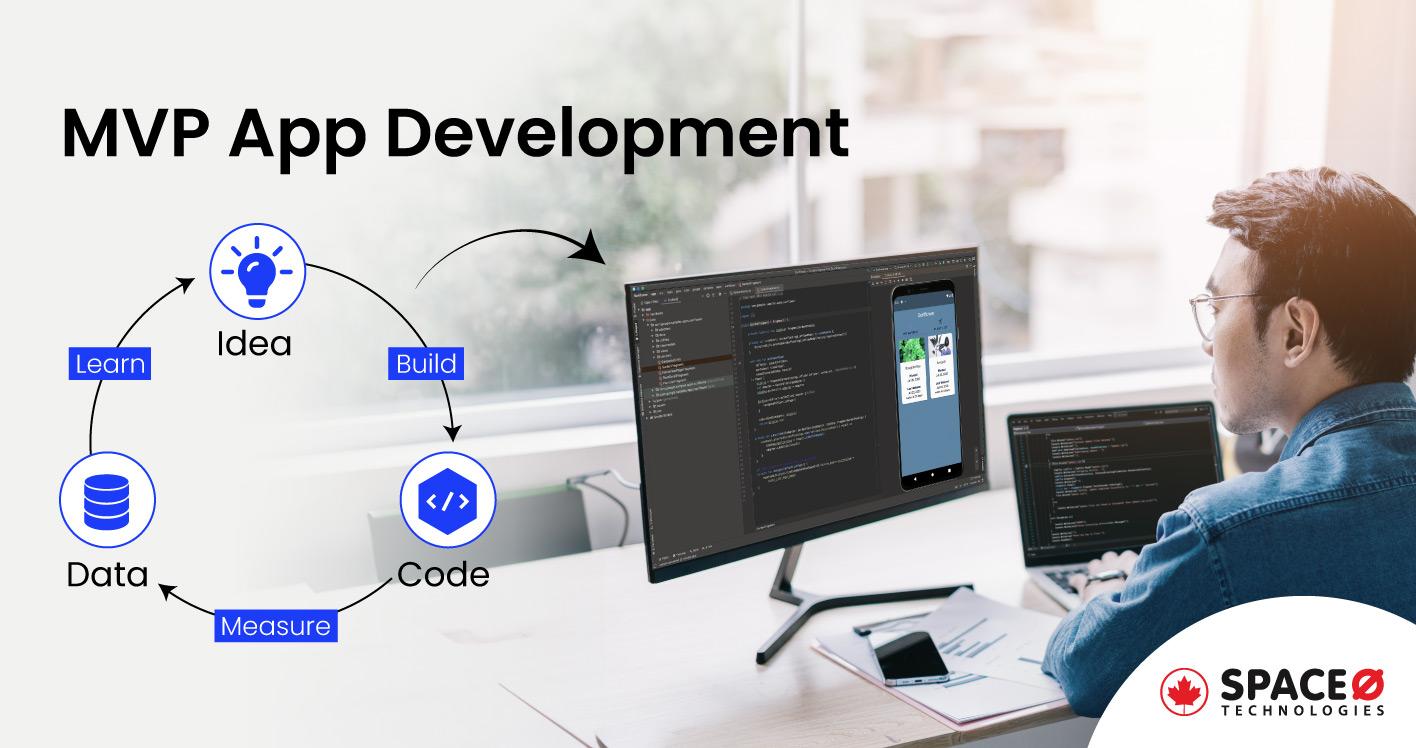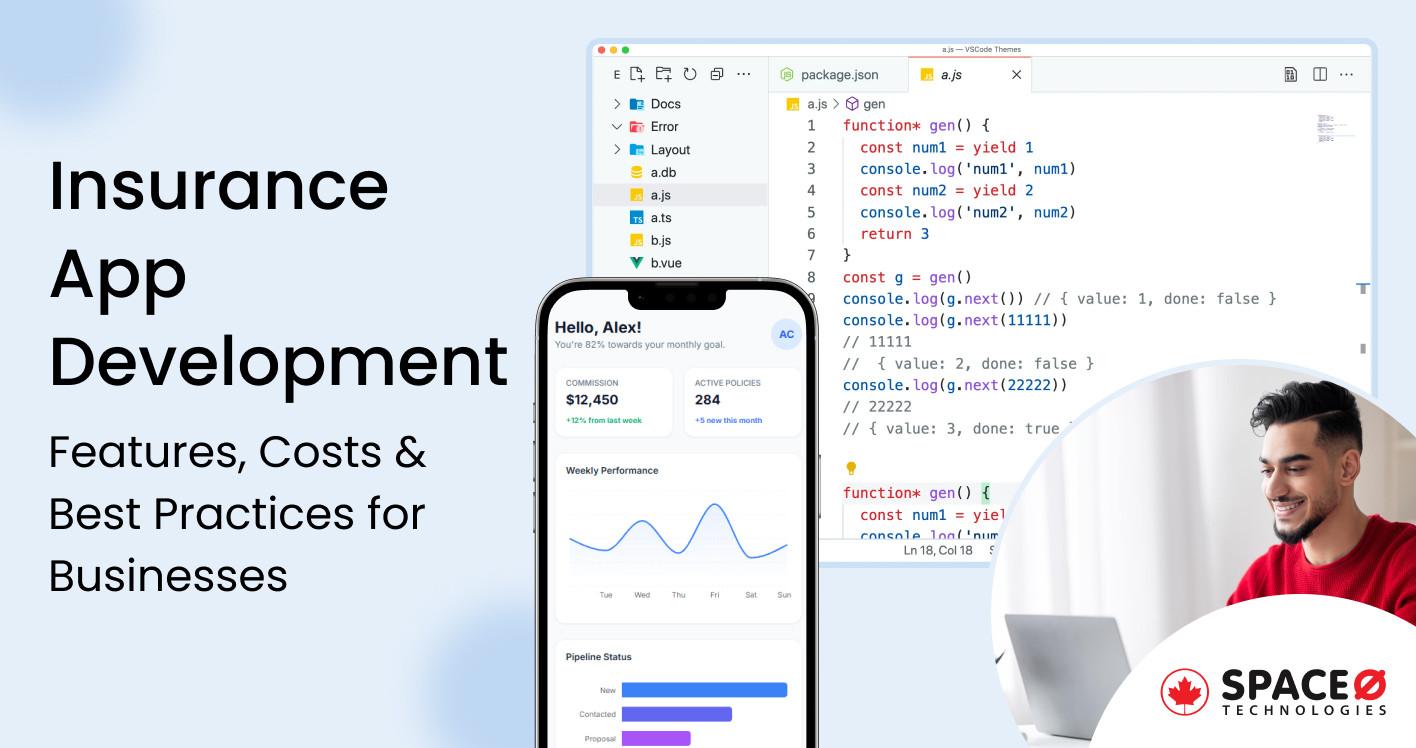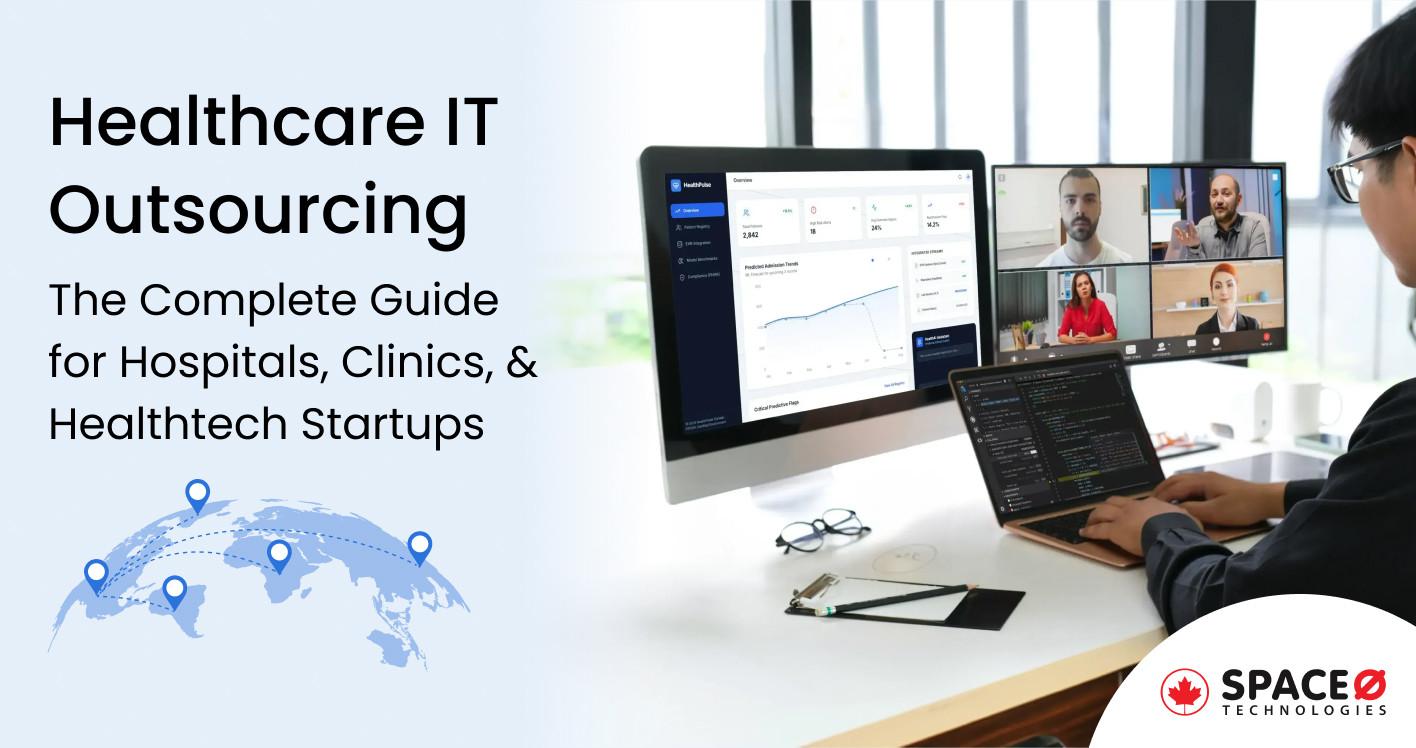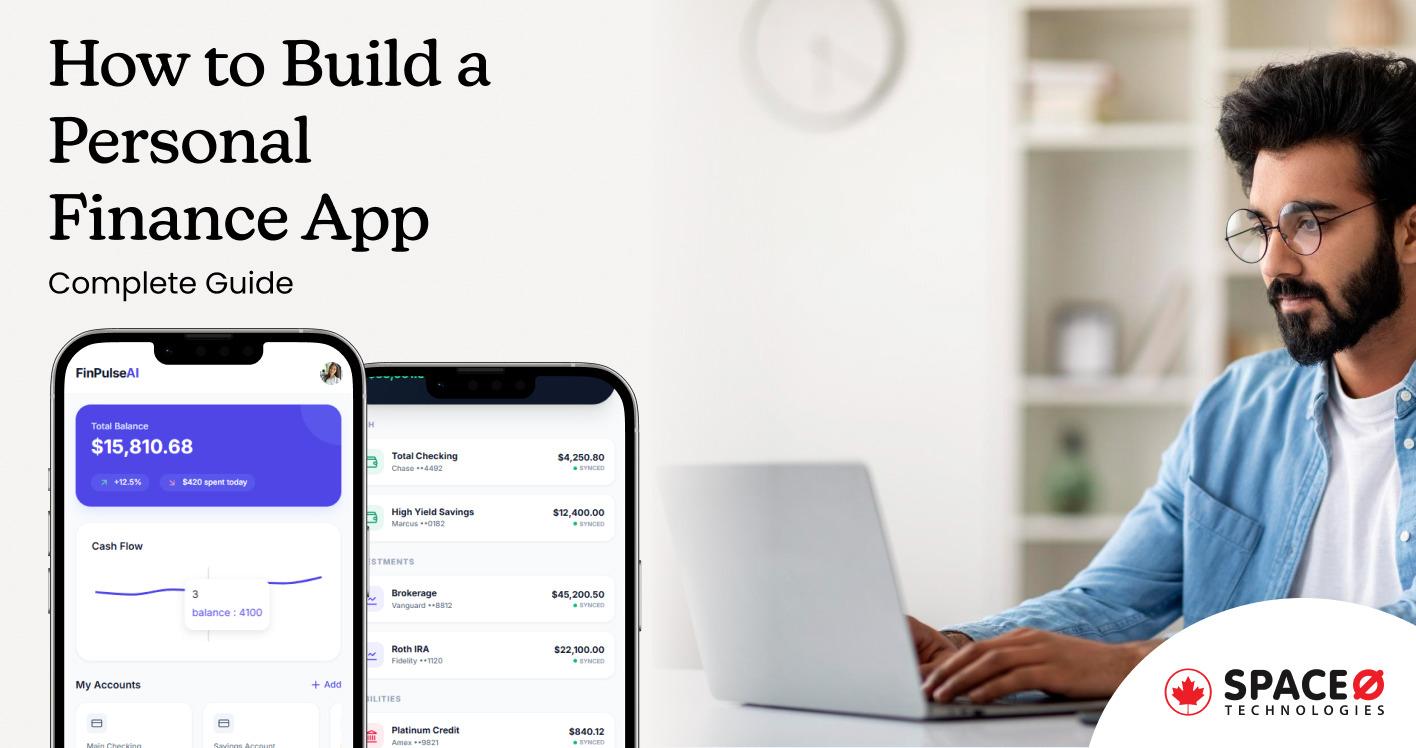
MVP App Development – The Comprehensive Guide
Key Takeaway:
- Launch with a focus on core features to address primary user pain points and gather feedback quickly.
- Seek and analyze user feedback continuously, using it as a roadmap for refining your product.
- A simple MVP takes 1-2 months and costs between $5,000 to $20,000, while more complex versions can extend to 6-12 months and cost upwards of $50,000.
If you are looking to build a successful app like Airbnb, Dropbox or Uber or you want to test your business app ideas business app ideas in the real world with minimal risk, then the best option for you is to build an MVP.
A minimum viable product is a smart way to start your app development journey. As a top MVP development company, we know how to develop a successful minimum viable product for your business. We have a skilled team that works closely with you to define the key features, design a user-friendly interface, and ensure a smooth user experience for your MVP.
In this blog, we have covered all of the important information you require about MVP. let’s start with the definition first.
Table of Contents
What is a Minimum Viable Product(MVP)?
A minimum viable product (MVP) is a mobile app development approach to create a simple version of an application with only sufficient features to suit the essential demands of early users.
The purpose of minimum viable product development is to:
- Quickly test and validate the feasibility and demand of a business idea or product concept targeting the Smallest Viable Audience (SVA).
- Launch a basic version of the product to the SVA to gather user feedback and understand their specific needs and pain points.
- Minimize development time and costs by focusing on core features tailored for the SVA, allowing for adjustments based on real-world feedback before broader rollout or further investment.
MVP, popularized by Steve Blank and Eric Ries, is a core concept of the Lean Startup methodology. It emphasizes creating a product efficiently and cost-effectively to address a specific problem or demand.
Here is a more detailed explanation with an example of building a food delivery app, to help you understand more about minimum viable products.
- Minimum: Focus on essential features like user registration, menu navigation, and payment processing, avoiding unnecessary complexities.
- Viable: Ensure the app addresses a genuine need, such as simplifying food delivery, with features like restaurant selection, order placement, and real-time tracking.
- Product: This refers to the actual food delivery app, encompassing the user interface and ordering process.
Let’s discuss the steps associated with the development of the minimum-viable product.
6 Simple Steps to Develop an MVP for Your Business
Here are the 6 simple steps you need to consider to build an MVP for your business.
Explore and Research Your App Idea
Before starting the development, you need to thoroughly investigate and research your idea. You need to identify the pain areas or the needs that your app will address. You can conduct market research, carry out competitive analysis, and conduct surveys to better understand the preferences of your smallest viable audience (SVA).
Consider the following questions when carrying out this step.
- What specific problems or pain points will your MVP address?
- Who is your target audience, and what are their demographics?
- Are there existing solutions on the market? If so, what are their strengths and weaknesses?
- What are the preferences and expectations of your smallest viable audience?
- Are there any gaps or unmet needs in the current market that your MVP can fulfill?
Want to Develop an MVP for Your Business?
Get in touch with us. We have a team of experts who specialize in developing MVP apps using Agile methodology.

What you can do is create user personas and conduct interviews or focus groups to get relevant input. These will help you develop your concept and ensure that the features you are going to include in your MVP are in line with the expectations of the target users.
Decide Core Features for Your MVP
Deciding the core features play an important role in your MVP development process. Your focus must be on the fundamental functionalities that directly address user pain points and bring value to your app. To help you understand what can be the core functionalities to include in an MVP here are the questions you need to consider.
- Which features do my users require to carry out the most important task?
- Which features will set my product apart from the competition?
- Which features are my customers requesting?
- Which features can be technically implemented in a short period of time?
- Which features would provide me with the most information about how my product is being used by users?
You must consider all of these questions to add suitable features to your MVP. As your MVP gains popularity and user input, you can prioritize advanced in the following iterations. This ensures that your initial release is functional, and user-friendly and addresses the primary demands of your smallest viable audience (SVA).
Connect with an App Development Partner
Once you have decided on the important features for your MVP, you need to connect with an app development company that specializes in creating MVP apps. Finding a reliable partner can be challenging in such a competitive industry. We are a leading mobile app development company, and we can help you convert your product idea into a successful MVP.
Check out what you need to consider when selecting a reliable app development company for your MVP.
- Ensure that the partner has relevant experience in your industry.
- Examine the past work for relevance and quality.
- Check for strong communication skills and responsiveness.
- Agree on project objectives, budget and timelines.
- Inquire about willingness to adopt an Agile development approach.
Considering all of these aspects can help you make informed decisions and select an appropriate development company for your MVP.
Design Intuitive Interfaces and Develop MVP
Now that you have decided on the features and connected with a reliable app development company, you need to consider the following points for this step.
- Develop wireframes and prototypes to visualize user flow and MVP functionality.
- Prioritize user-centred design principles for a user-friendly and expectation-meeting MVP.
- Establish regular collaboration with the MVP app design and development team.
- Conduct frequent meetings and maintain open communication channels to bridge the gap between the design and development phases.
- Ensure that the MVP’s user interface reflects and aligns with your brand’s identity.
- Strengthen brand recognition and build user trust through consistency in design elements like color schemes and typography.
- Emphasize efficient coding practices within the MVP development team.
- Maintain open communication channels through regular check-ins with the MVP development team.
- Track the MVP development process and facilitate issue management with regular updates and progress reports.
Establishing a strong line of communication is key. Regular collaboration ensures that everyone is on the same page. Efficient coding practices and continuous feedback loops further streamline the development process, ensuring a successful MVP launch.
Test Your App and Launch the MVP
As you know testing is the link that connects the development of MVP to its successful launch. During this phase, you must focus on ensuring that the app works smoothly and meets user expectations. You need to carry out a few types of testing that include.
- Functional testing to ensure all the features work correctly, identifying and correcting any flaws or problems.
- Usability testing to assess how easy it is for users to navigate your app and achieve their goals.
- Performance testing to examine your app’s speed, stability and scalability, ensuring the app can handle an increasing user base without issues.
Once testing is done, you need to launch your MVP. First, create a marketing strategy that creates interest in your product and attracts early adopters. Consider a soft launch to a limited number of users to get early feedback and make necessary changes prior to a full-scale launch.
Refine and Iterate for Optimal MVP Performance
After launching the MVP, user feedback becomes a useful asset in directing your efforts to optimize the MVP for peak performance. Prioritize user-generated improvements and fix usability issues. This post-launch time is essential for improving the user experience and ensuring that the application meets the expectations of the active users.
You must keep an active and direct contact route with your user base, whether through surveys, in-app feedback systems, or support channels. Pay attention to what users want and make improvements in response. Remember that your MVP is just the start, and you should keep improving it even after you launch it.
Now that you have learned the steps involved in developing an MVP, let’s discuss the cost associated with the development.
How Much Does It Cost to Develop an MVP App?
The average cost to create a minimum viable product ranges from $5,000 to $150,000 or more.
This is just an average range, if you want to know the exact cost, this cost depends on various factors including features and functionalities of MVP, choice of technologies and tools, rates of hiring app developers and designers, and location of the team. To help you out, check out this table containing examples of MVP apps with the core functionalities and the cost of developing each.
| MVP Example | Key Features | Additional Features | Cost Range |
|---|---|---|---|
| E-commerce App (Simple App) |
|
| $5,000 – $20,000 |
| Social Networking App (Medium App) |
|
| $20,000 – $50,000 |
| On-demand Food Delivery (Complex App) |
|
| $50,000 – $100,000 |
Now that you clearly understand the cost involved in developing MVP, Let’s learn when to consider and when to not consider a minimum viable product.
When You Should Consider MVP App Development?
Check out the following criteria when you need to consider MVP app development.
- When you have a limited budget and a shortage of resources, MVP helps you build a minimal version of your app while decreasing your initial investment and obtaining insights.
- When the market demands or user preferences are uncertain, MVP allows you to test the market before investing considerably in a product.
- When speed is important, like when you want to capitalize on a trending concept or you want to be the first to market, MVP gives you the ability to launch rapidly and adapt depending on user input.
- If your business depends on user pleasure and input, MVP encourages early involvement with the smallest viable audiences to include their suggestions and create tailored solutions.
- When working on complex projects, breaking down into smaller, more manageable MVP apps helps you overcome the challenges one at a time and ensure an efficient development process.
When You Should Not Consider MVP App Development?
Check out the following criteria when you should not consider MVP app development.
- When you already have a well-defined solution for your app project, you do not need an MVP to validate it.
- With sufficient financial and human resources, full-scale development is preferred above the MVP stage.
- In industries such as healthcare or finance, where reliability is most important, you need to consider starting a comprehensive approach rather than developing an MVP.
Let’s discuss the core benefits associated with the minimum viable product.
5 Core Benefits of MVP App Development
Here are the 5 core benefits of MVP app development.
Accelerates Rapid Entry into the Market
MVP development enabling you to launch an optimized version of your application that contains only the essential functionality. This indicates that you can release your application much more quickly, mostly in weeks rather than months.
For example,
Instagram began as an MVP for iOS, with only a few basic photosharing functionalities. Due to the quick launch, the app gained 25,000 users in the first 24 hours.
Improves Cost Efficiency and Resource Management
Developing full-featured applications can turn out to be costly and time-consuming. As opposed to this, MVP development concentrates on the essential functionality, saving you both time and money.
By focusing your efforts and resources on what actually is important, you can avoid unnecessary spending and better allocate your budget. This low-cost approach is particularly useful for startups and smaller businesses with limited resources.
Focuses on User-centered Design and Feedback Integration
User feedback and interaction are highly valued throughout MVP development. This allows you to engage your smallest viable audience early in the development process, to make sure the design as well as the features of your app match preferences and requirements.
For example,
The founders of Airbnb started with an MVP in the form of an easy-to-use website that offered accommodations for a design conference. This approach supported them in understanding client preferences and growing into an international platform.
Mitigates Development Risk Strategically
Developing an app without validation is risky. MVPs minimize risk by allowing you to test your fundamental concept and market feasibility early on.
If the initial MVP fails to gain traction, you can pivot or change without incurring the costs associated with a fully developed app. This type of strategic risk management plays an important role for businesses and startups looking to reduce their financial exposure.
Leverages Data-driven Insights for Informed Decisions
MVPs produce useful information and insights through user interactions. This data-driven approach helps you with the information you need to make well-informed choices regarding the app’s future. You can efficiently prioritize updates and improvements by analyzing the feedback of users and real-world usage trends.
For example,
Snapchat started as a photo-sharing app with disappearing messages. They enhanced its features to include Stories, Filters, and Discover based on user behaviour as well as preferences by analyzing user data.
Now, let’s discuss the common myths about MVP app development.
5 Common Myths About MVP App Development
Here are the 5 common myths about MVP app development.
MVP is Only for Startups
MVPs are not just for startups. MVPs are often used by established businesses to test new features, access new markets, or explore innovative concepts. It’s a beneficial method for any company seeking to minimize risk.
MVP is All About Cutting Costs
While cost-effectiveness is an important aspect of the MVP concept, its primary goal is to test and validate an app idea. Focusing primarily on cost-cutting can result in a low-quality MVP that fails to gather important user data.
MVP is a One-time Release
Some people believe that an MVP should only be released once. In fact, MVP creation usually involves an iterative process. After the initial release, you collect feedback, improve, and release updated versions depending on user feedback.
MVP is Only for Tech Products
MVPs are not just for tech products. These products can be used in a variety of industries, including services, physical goods, and even non-profit organizations. The idea is to design the simplest version possible that offers value and can be tested with real people.
MVPs Don’t Need Marketing
Developing an MVP is only the beginning. To convince users to try your MVP, marketing and user acquisition efforts are still required. Marketing neglect might result in a lack of user feedback and a failed experiment.
Do You Want to Validate Your Idea?
Our experienced developers specialize in delivering industry-specific solutions and have served several industries such as healthcare, transportation and real estate.
Now that you have an understanding that what are the common myths if you are still not clear with MVP then check out the FAQ section.
FAQ about MVP App Development
Is MVP used in Agile?
Yes, MVP is commonly used in Agile methodologies. Agile focuses on iterative development, collaboration, and input from customers. MVP approach is well-aligned with these concepts by involving the creation of a basic version of a product with important features. The aim is to validate the concept and get feedback from early adopters.
This approach enables Agile teams to swiftly release a working version of the product and then incrementally enhance the product based on user input, which is a key component of Agile development.
What is the difference between MVP and beta apps?
The primary difference between MVP and beta apps is in the objective and development period. The MVP app version prioritizes the delivery of core functionality while evaluating the viability of the product and collecting user feedback. Typically, MVPs are released to a select number of users.
On the other hand, a beta app is a more developed iteration that has undergone extensive testing and bug fixes. Beta testing involves a large user base and aims to eliminate any remaining bugs prior to a full-scale launch.
What are the tools and technologies used for MVP app development?
Here are the tools and technologies used for the development of MVP apps.
- Programming languages such as HTML, CSS, JavaScript, Python, Node.js and Ruby.
- Frameworks such as React, Angular, Vue.js, Express.js, Django, Ruby on Rails, React Native and Flutter.
- Databases such as MySQL, PostgreSQL, MongoDB, and Firebase.
- Cloud services such as AWS, Azure, and GCP.
- Version control such as GitHub and GitLab.
- DevOps/Deployment tools such as Docker, Kubernetes, and CI/CD tools.
Build MVP for Your Business
You have learned all the aspects associated with the minimum viable product in app development through this guide. These aspects include the benefits of MVP such as minimizing risk, early user feedback, faster time to market, and cost efficiency. Along with the limitations such as potential user engagement challenges and the need for continuous iteration.
Creating a minimum viable product involves more than just developing a smaller version of your product. This includes adopting a mindset that prioritizes risk reduction, customer centricity and rapid learning.
Space-O Technologies is a leading mobile app and software development company specializing in successfully delivering 300+ projects. We have an experienced team of app developers who are experts at developing MVP apps for your business. Connect with us to create a customized MVP solution that meets your specific requirements.
Editor's Choice

Insurance App Development: Features, Costs & Best Practices for Businesses

Healthcare IT Outsourcing: The Complete Guide for Hospitals, Clinics, and Healthtech Startups in 2026

How to Build a Personal Finance App: Complete Guide
All our projects are secured by NDA
100% Secure. Zero Spam
*All your data will remain strictly confidential.
Trusted by


Bashar Anabtawi
Canada
“I was mostly happy with the high level of experience and professionalism of the various teams that worked on my project. Not only they clearly understood my exact technical requirements but even suggested better ways in doing them. The Communication tools that were used were excellent and easy. And finally and most importantly, the interaction, follow up and support from the top management was great. Space-O not delivered a high quality product but exceeded my expectations! I would definitely hire them again for future jobs!”

Canada Office
2 County Court Blvd., Suite 400,
Brampton, Ontario L6W 3W8
Phone: +1 (437) 488-7337
Email: sales@spaceo.ca

